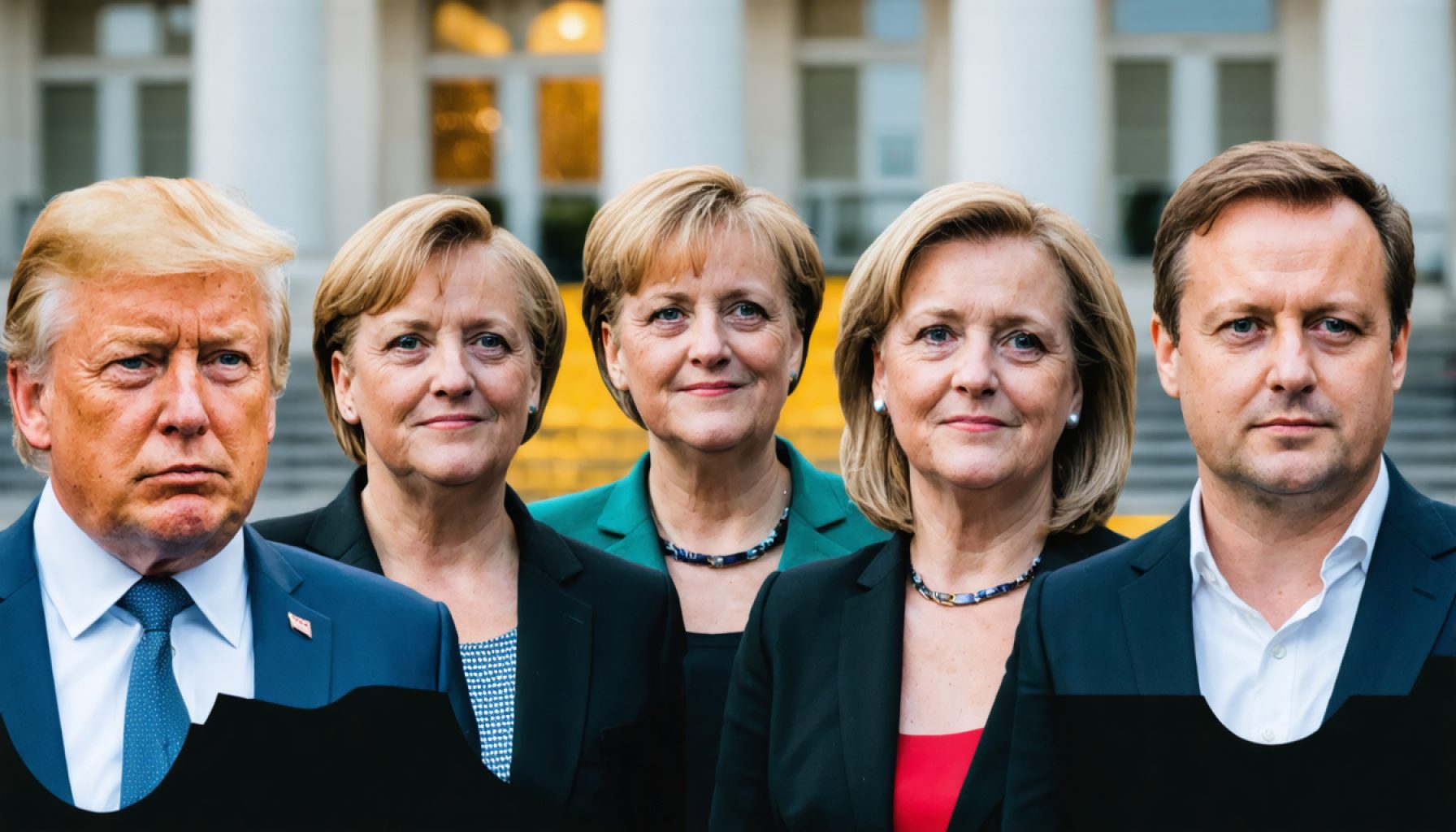- CDU/CSU retains leadership with 29%, indicating enduring appeal amidst political shifts.
- AfD captures significant attention and votes, rising to 19.6% and signaling change.
- SPD struggles with 16%, while the Greens aim for relevance at 13.3%.
- Linke shows resilience with an 8.6% share, maintaining a foothold on the left.
- FDP barely holds at 4.9%, with BSW close behind at 4.7%.
- Other parties account for 3.9% of votes, reflecting diverse political voices.
- Friedrich Merz is a focal point for understanding the election results.
- Germany’s political landscape is dynamic, with challenges to old alliances and calls for adaptation.
- Change is a driving force, shaping the future of Germany’s political destiny.
In the glow of freshly counted ballots, Germany’s political landscape shudders with a surprising shift. The CDU/CSU clings to the top with 29%, a reminder of their enduring appeal despite the swelling tide of change. Meanwhile, the AfD makes headlines, capturing attention and votes with a striking 19.6%, marking a significant rise that sets tongues wagging.
As the SPD grapples with a modest 16%, the Greens find themselves at 13.3%, striving to remain relevant in a political sea of swirling currents. Further left, the Linke holds 8.6%, showing resilience as they navigate the rocky waters of voter engagement.
The FDP, not far behind, teeters on the brink with 4.9%, while the BSW trails just below with 4.7%. Meanwhile, a silent 3.9% murmurs from the “Other” category, a testament to the diverse voices vying for a stage in Germany’s vibrant democracy.
As the evening wanes, all eyes shift to Friedrich Merz, poised to unravel the implications of these numbers. The takeaway? A stirring reminder of the dynamic nature of democracy, where old alliances face new challenges, and every vote holds the power to reshape the future. While the CDU/CSU remains at the helm, the emergence of the AfD signals a call to action—a time for introspection and adaptation.
For Germany, change is not a distant specter but a palpable force shaping the country’s political destiny. Keep watching; the story’s end is far from written.
Germany’s Political Earthquake: What the Latest Election Results Mean for the Future
How-To Steps & Life Hacks
Understanding Germany’s political landscape requires more than just looking at election percentages. Here’s a step-by-step guide to following and interpreting the impact of these results:
1. Stay Informed on Policy Changes: With each election shift, parties may alter their policy platforms. Follow updates from credible sources like BBC News or Deutsche Welle.
2. Engage in Political Dialogues: Join discussions on platforms like Twitter or political forums to stay engaged and broaden perspectives.
3. Learn the Party Platforms: Study each major party’s policies to understand their influence.
Real-World Use Cases
The rise of the AfD is significant as it may shift policy, particularly on immigration and EU relations. Businesses and international observers must be vigilant about regulatory changes that could impact trade and cross-border interactions.
Market Forecasts & Industry Trends
With CDU/CSU leading and AfD on the rise, there could be potential shifts in Germany’s economic policy and EU relations. Expect more conservative economic policies, which might be favorable for industries like automotive and manufacturing but potentially limiting for green energy initiatives.
Reviews & Comparisons
– CDU/CSU vs. SPD: The CDU/CSU’s stronger performance compared to SPD highlights a voter preference for traditional conservative policies over social-democratic ones.
– Greens vs. AfD: The environmental focus of the Greens contrasts sharply with the AfD’s nationalistic tendencies, offering voters clear ideological choices concerning climate change and national identity.
Controversies & Limitations
– The AfD’s rise is controversial due to its far-right positioning, which often sparks debates about nationalism and Germany’s future role in the EU.
– The FDP’s near-failure to secure significant representation raises questions about its future viability and influence.
Features, Specs & Pricing
Understanding the “features” of Germany’s political parties entails comprehending their platforms:
– CDU/CSU: Traditionally focuses on economic stability and conservative social policies.
– AfD: Positions itself against EU centralization with strong views on immigration.
Security & Sustainability
– Political Security: The established parties must work together to ensure political stability amid the AfD’s rise.
– Environmental Sustainability: The modest performance of the Greens may slow down ambitious climate policies, impacting Germany’s sustainability goals.
Insights & Predictions
Expect dialogue around coalition formations, as no single party holds a clear majority. CDU/CSU may partner with smaller parties to maintain governance, but coalitions may be more volatile.
Pros & Cons Overview
– Pros: Germany’s political diversity ensures representation of a broad spectrum of views, fostering resilience in democratic processes.
– Cons: The fragmentation raises challenges in forming stable governments and implementing cohesive policies.
Actionable Recommendations
1. Engage in Local and National Elections: Your vote shapes the political landscape.
2. Support Civic Initiatives: Encourage discussions and forums that foster understanding and engagement in political processes.
3. Monitor Market Reactions: Stay informed on economic shifts resulting from policy changes by following credible financial news sources.
For further insights into Germany’s dynamic political scene and international relations, visit Deutsche Welle and BBC News.
